This is a section of the book Tallmans In The Civil War. This page covers John J. Losee and Theodore Whitehead Davis. You can read on, or click here to browse the rest of the book.
John J. Losee
Husband of Mary Tallman, John and Mary were 2nd cousins it’s only known they married between 1851 and 1855. John was born April 26, 1823 in the Town of Washington, Dutchess County, New York. They owned a 100 acre farm on the Chautauqua-Stedman Road in Chautauqua County close to her father’s farm. He enlisted August 30, 1862 age 39 and was described as 5’- 51/2” in height with grey eyes, dark hair and of light complexion. He mustered at Jamestown on 11 Sept 1862 into Company “F” of the 112th New York Infantry Regiment “The Chautauqua Regiment.” He died in a Military Hospital in Suffolk, VA on April 11th 1863 from inflammation of the brain following a fever. John and Mary had no children.
The 1862 call for Volunteers were to receive a $50 State bounty plus the $100 Federal bounty. Jeremiah Drake a former Baptist minister, who served the ministry in Panama, NY for 4 years and Westfield, NY for 3 years. At the committee meeting of August 14th, he was elected Colonel. He did not reach the regiment until September 2nd. As early September wore on, the regiment was formed and was barracked at the Agricultural Fair Grounds about a mile South of Jamestown. The camp was called Camp Brown, in honor of Colonel James M. Brown of the 100th NY. After Lincoln's first call for men in May of 1861 Brown, a former Jamestown attorney who raised Co. B in the 72nd NY (the famed Excelsior Brigade) where he was a Captain. Later in November 1861 he was commissioned a Colonel in the 100th NY and led them into their first fight at Fair Oaks, Virginia May 31, 1862. He was killed leading his men into that battle and his body was never recovered from the field. The camp was on the property of a fallen young soldier Sgt. James Hall of the 72nd NY who fell at Malvern Hill. Some 2100 men of the 112th, and 154th New York Regiments, and the 7th Co. NYSS were in camp in hopes to drill the men into fighting units. But orders came to the 112th Regiment and 7th NY Sharpshooters to be forwarded to Washington immediately. So on the 12th marched to the depot of the Atlantic & Great Western Railroad for the trip south. As the men were organized to leave Jamestown from Camp Brown, a large crowd assembled and the men, all 2100, sang the “Star Spangled Banner”, and as they marched to the railroad for the trip south, they sang “John Brown’s Body” as a marching song to the tune of Battle Hymn of the Republic. After the speeches and eloquent remarks, the men pledged to never desert their colors. They embarked the railcars, and amid the sobs and tears of mothers, wives, children and friends, the 112th New York Volunteer Infantry went to war.
The regiment was headed for Fortress Monroe, whence it proceeded to Suffolk, Va. It was engaged at Franklin, Zuni, and Deserted House, having 1 killed, and 1 wounded in the last named action. It shared with credit in the siege of Suffolk in the spring of 1863, where much sickness prevailed and it lost severely by disease. In June, 1863, with Foster's brigade, 7th corps, it participated in the campaign up the Peninsula,—a campaign, trying by reason of the heat and the rapid forced marches.
Theodore Whitehead Davis
Husband of Mary Estelle Tallman, they married on October 24, 1866 in Poughkeepsie. Theodore had received his early education in the Dutchess Co Academy, entered Rensselaer Polytechnic Institute in Troy, NY in 1861 to obtain a degree in Engineering. In the fall of 1862 he dropped out and enlisted into the Navy on November 14, 1862 and was discharged June 23, 1864. He was accepted as Fleet Ensign and assigned as Signal Officer on Admiral Farragut’s flagship U.S.S. Hartford during the war. While on the Mississippi River during the siege of Port Hudson, LA, he interpreted the Confederate signal codes, in recognition of which he was promoted and had a complimentary letter from Edwin M. Stanton, Secretary of War. He remained through the blockade of the Red River, but left the Navy prior to Farragut’s great Battle of Mobile Bay the Confederacy’s last open major port.
While on the steam frigate Hartford, he was wounded by being struck over the eye by a splinter knocked off a spar during the bombardment of Fort Powell off Mobile, Alabama in 1863. The injury affected his eye sight for some time.
After the war he returned to Rensselaer and obtained his Civil Engr. degree in 1866. He became Poughkeepsie’s first City Engineer after supervising the cities construction of its first water plant he followed this by accepting the position of Superintendent of the St. Joseph, MO Water Company. After his retirement they returned to Poughkeepsie where he wrote for the Poughkeepsie News Press and the Eagle. He was a 32nd Degree Mason and a District Deputy Grand Master. Upon his death in 1913, he leaves his wife Mary and sons Lieut. William Davis head of the New York City Police Depts. Traffic Div., Charles of New York City a leading ship designer and a daughter Angeline “Angie” Hallenbeck. He was buried in Poughkeepsie Rural Cemetery.
Copyright © 2013 Jon L. Tallman, all rights reserved
Previous: Trustum C. Tallman and Henry Merritt Tallman
American Civil War Story - Home
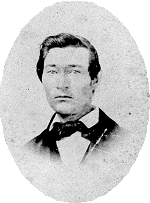

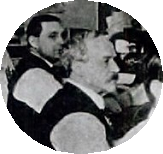
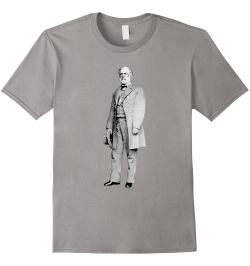


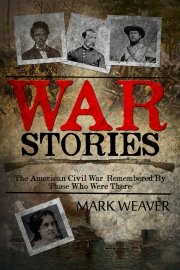

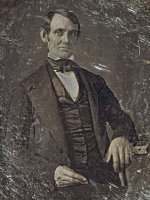
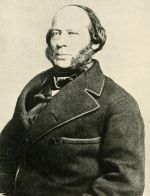
New! Comments
Have your say about what you just read! Leave me a comment in the box below.